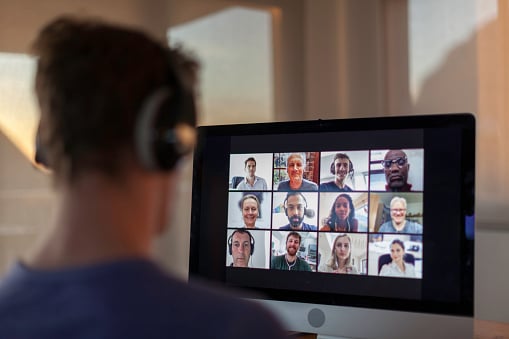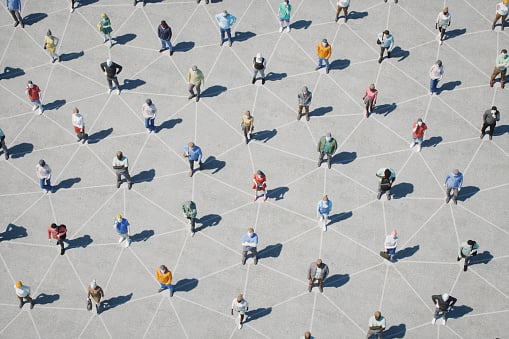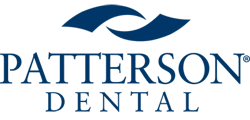Dentistry is a science-based profession. Many of us took courses in microbiology and immunology in our undergrad education. We all know that scientific truth forms the basis of both medical and dental research and clinical practice. Yet here we were. Oral health providers, whose profession is deeply rooted in evidence-based science, being told to indefinitely suspend conventional practice for the sake of public health.
For almost two months most of us were content to shelter in our homes, observe the quarantine orders, and watch the devastation of the pandemic play out. After all, we know about viruses, the spread of infection, and we understand science. We worried for the safety of our families, friends, employees and patients. Some of us observed sickness and death first- hand. Others simply watched it on television. Yet the Governor’s quarantine orders seemed reasonable because we know about science and infection and antibodies and vaccines and immunity. Nevertheless, we optimistically imagined a quick end to this thing.
Then came some bad news. It appeared that the end we had imagined was nowhere in sight. In fact, it looked like our landscape might be changed for a long time. The best public health metrics pointed toward extended social isolation and a gradual reopening of society. And, ironically, all reopening determinations were to be made by politicians and government officials.
Soon, the idea of isolation and social distancing pervaded the entire culture and our total consciousness. As time droned on, we witnessed talk show hosts broadcasting from their homes and celebrity entertainers singing from their bathrooms. Each night’s news broadcasts featured stories of the heroic efforts of doctors, nurses and first responders. We watched the numbers of infected go up and followed the slope of the graph’s curve. We watched long lines at food banks and heard dismal predictions concerning the economy. Auto manufacturers and others retooled to create face masks, face shields, respirators and hand sanitizer. We now donned surgical facemasks; the same kind we’d worn in our practices, to enter the hardware or grocery store.
Of course, most of us continued to monitor our offices, arranging for patient’s emergency care while waiting, always waiting, for any information on what new precautions would need to be taken and when we might return to work. But waiting can wear you down and how long can one survive with no income?
A terrible new dynamic had arrived; as some asked if saving the economy was more important than saving lives and mitigating the risk of spreading the infection.
After weeks of being nonproductive, we needed economic help. And when it came, we had to wade through a confusing alphabet soup of acronyms like SBA, EIDL and PPL, as well as countless applications, rules and regulations. We spent endless hours on the phone or online completing forms or applying for loans in an attempt to help our employees and protect our practices. Thankfully the MDA and ADA were right there to provide support and helpful information through email alerts, webinars, and postings on their websites.
We wanted to get back to work but needed help. Once again, organized dentistry, acting on our behalf, stepped up to the plate. Working tirelessly from the beginning, both the ADA and MDA now produced some much-needed guidance, a highly detailed science-based roadmap for reopening our practices. Soon OSHA, CDC, OSAP, WHO and even LARA followed suit. And although it became a bit confusing, organized dentistry was able to help all of us sort through each group’s documents and provide some clarity. Suddenly there were new rules to be learned, new safety protocols to be put in place. But it wouldn’t be cheap. We needed new face masks, face shields and disinfectants, all in very short supply. There would also need to be extensive training, and everyone would need to buy in.
Time dragged on. We learned about risk acessments, N95’s, plastic face shields and teledentistry. We watched protesters, thumbing their noses at politicians and science, waving guns and flags while demanding a return to normal. Only normal wasn’t coming. Science claimed it was a long way off. A terrible new dynamic had arrived; as some asked if saving the economy was more important than saving lives and mitigating the risk of spreading the infection. That’s a hard choice for some. But not so hard if your profession is based on science and committed to safety.
Finally, dentistry had researched and assembled all the correct scientific pieces we believed would allow our profession to safely reopen. We’d petition the Governor with the science, but would she respond? And when she finally did, we knew we’d need to overcome fear from patients and staff and pray that both would return.

But praying would never be enough. What we really needed was trust. And trust is something that can only be earned when patients and staff are convinced you know what you’re doing. They need to know you’d follow the best scientific practices to ensure their health and safety. If you can’t guarantee that- they’re staying home.
That’s where communication comes in and that’s what our MDA does best. Michigan’s dentists were now able to use a variety of communication resources available through our association, including posters, patient and staff letters, informational webinars and PR media outreach through television and digital media-all designed to tell of dentistry’s commitment to patient and employee safety.
Dentistry has always faced significant challenges, and this certainly won’t be our last.
Although we can’t predict the future, one thing is certain. Now, more than ever in our lifetimes, science may govern our lives and determine our futures in ways it never has before. And because dentistry is science-based healthcare, it’s likely, with guidance from our professional associations, that we’ll always be successful in meeting and adjusting to those challenges.
___________
Dr. Michael Maihofer
Stock photo credits: imaginima/E+/Getty Images


